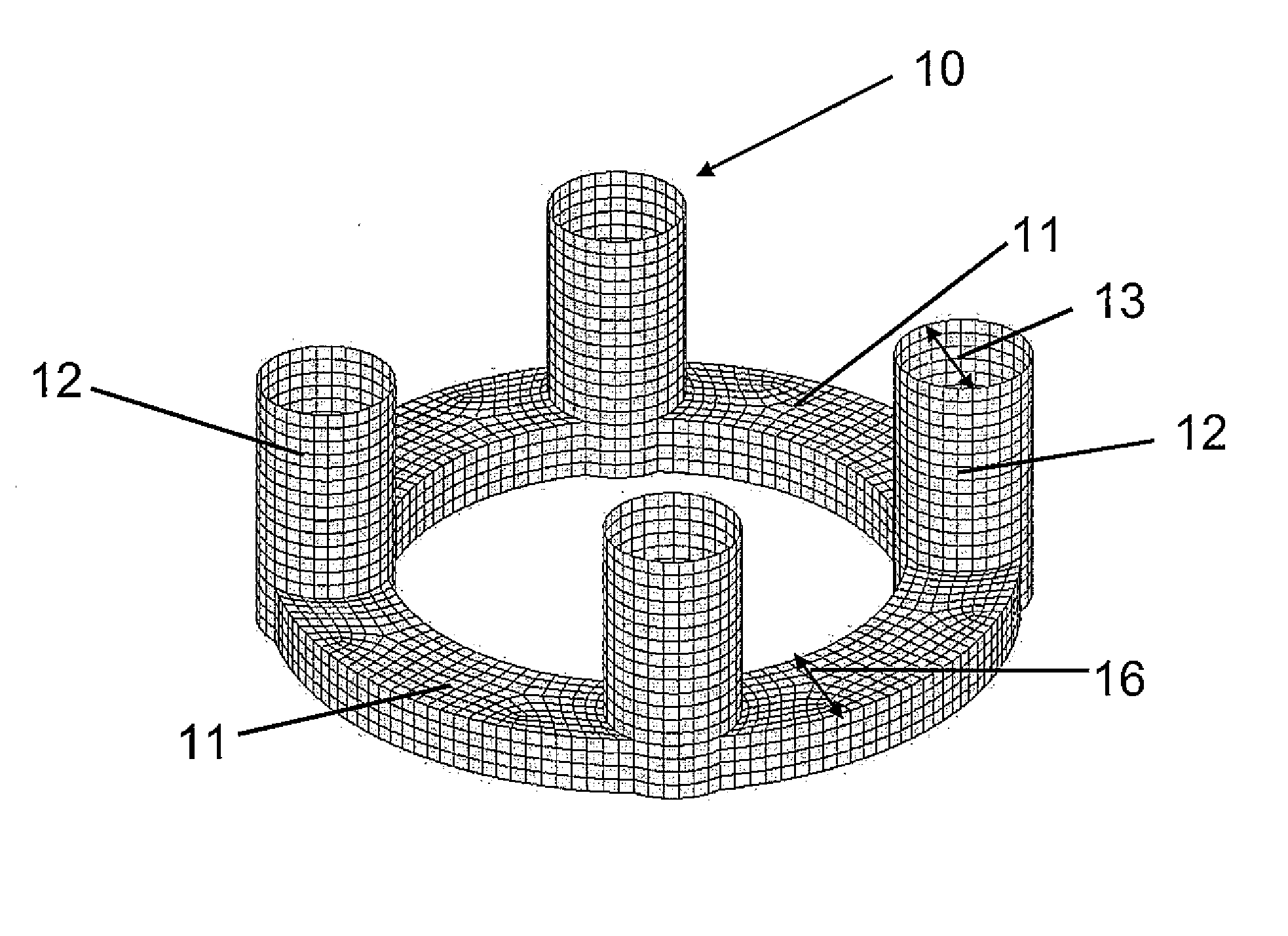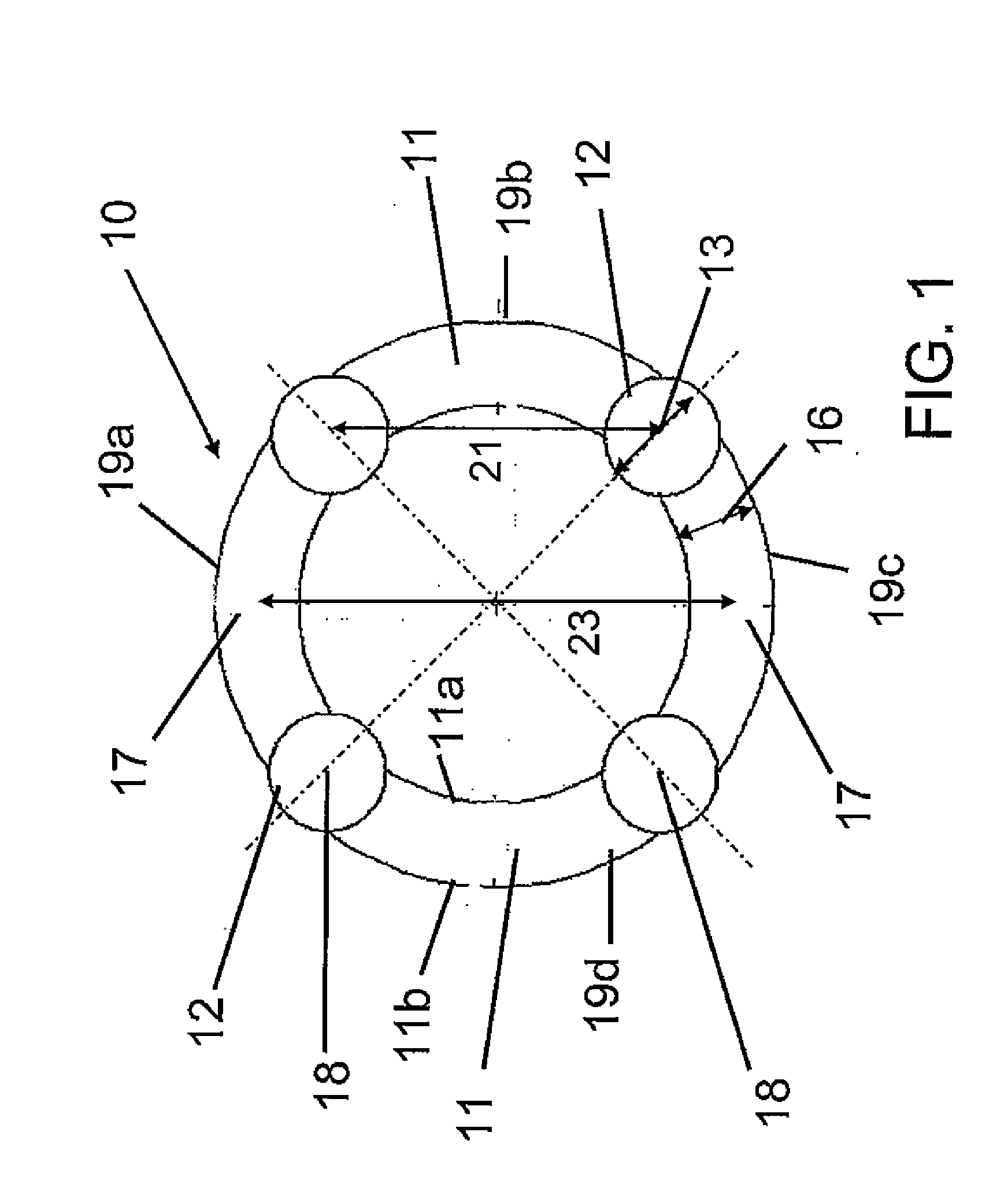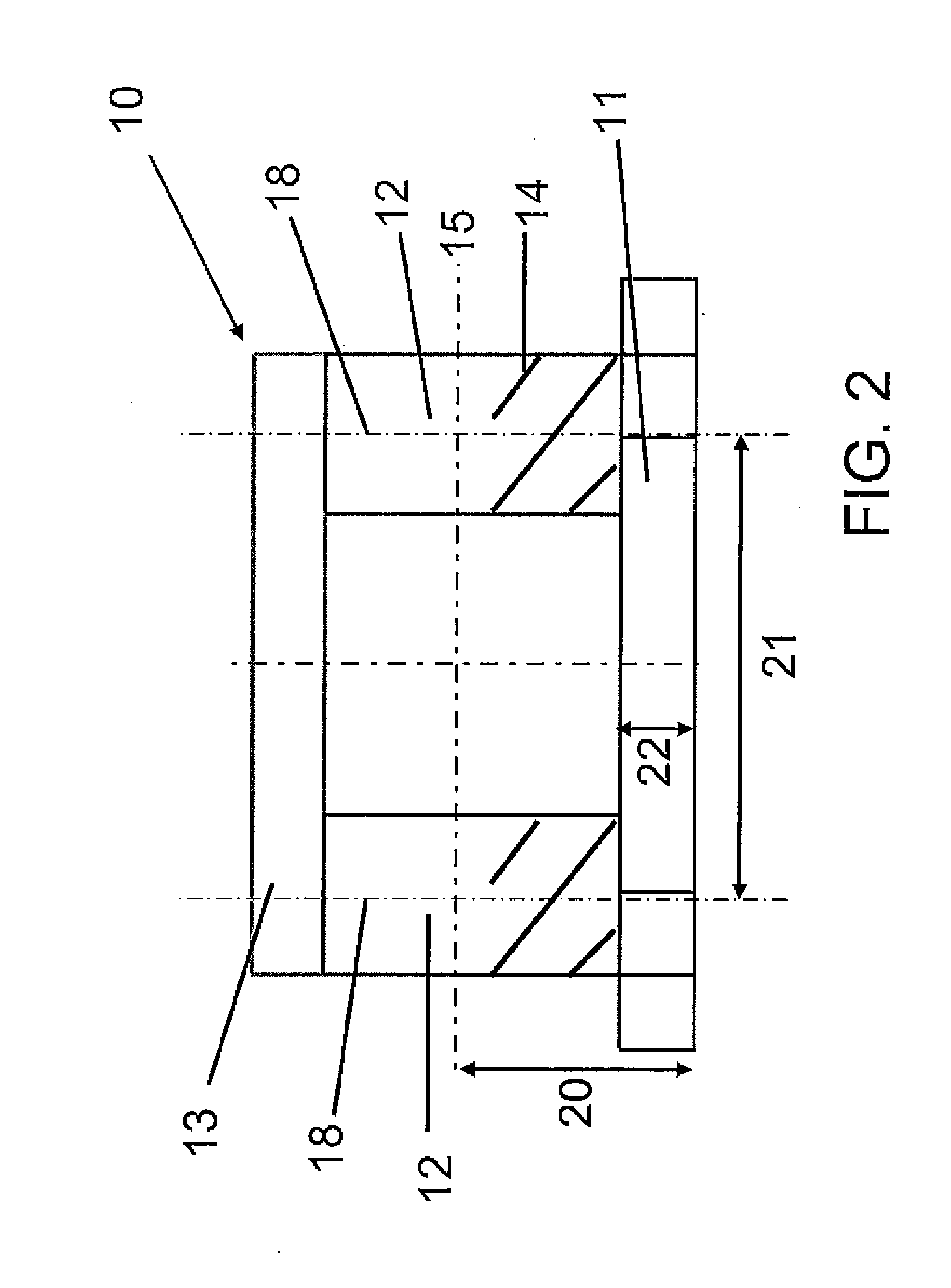C-semi with minimum hydrodynamic forces
a technology of hydrodynamic forces and semi-submersible platforms, which is applied in the direction of special-purpose vessels, vessel construction, transportation and packaging, etc., can solve the problems of inability to support steel catenary risers, inability to use conventional semi-submersible hulls for dry tree production applications, and fatigue of steel catenary risers, etc., to reduce costs and risks, improve hull, mooring and riser system performance, and minimize the effect of wav
- Summary
- Abstract
- Description
- Claims
- Application Information
AI Technical Summary
Benefits of technology
Problems solved by technology
Method used
Image
Examples
Embodiment Construction
[0037]FIG. 1 is a plan view of a C-semi 10 with a circular cylindrical pontoon 11 according to an embodiment of the present invention. As shown, the four circular cylindrical columns 12 are coupled to the pontoon 11 at points along the perimeter of the pontoon 11 equidistant from each other. While the pontoon 11 may be a single structure or several separate structures, for ease in description, the pontoon 11 will be referred to as having four sections or quadrants 19a, 19b, 19c and 19d; each section is coupled to and positioned between two adjacent columns 12. The pontoon 11 is a circular, hollow toroid with an interior edge 11a and an exterior edge 11b. The pontoon can be filled with buoyant material such as air, or ballast such as water.
[0038]In this embodiment, parts of each column 12 can extend radially beyond the interior and exterior edges of the pontoon 11. The maximum width (in this case the diameter) 13 of the columns 12 is larger than the radial width 16 of the pontoon 11....
PUM
 Login to View More
Login to View More Abstract
Description
Claims
Application Information
 Login to View More
Login to View More - R&D
- Intellectual Property
- Life Sciences
- Materials
- Tech Scout
- Unparalleled Data Quality
- Higher Quality Content
- 60% Fewer Hallucinations
Browse by: Latest US Patents, China's latest patents, Technical Efficacy Thesaurus, Application Domain, Technology Topic, Popular Technical Reports.
© 2025 PatSnap. All rights reserved.Legal|Privacy policy|Modern Slavery Act Transparency Statement|Sitemap|About US| Contact US: help@patsnap.com



